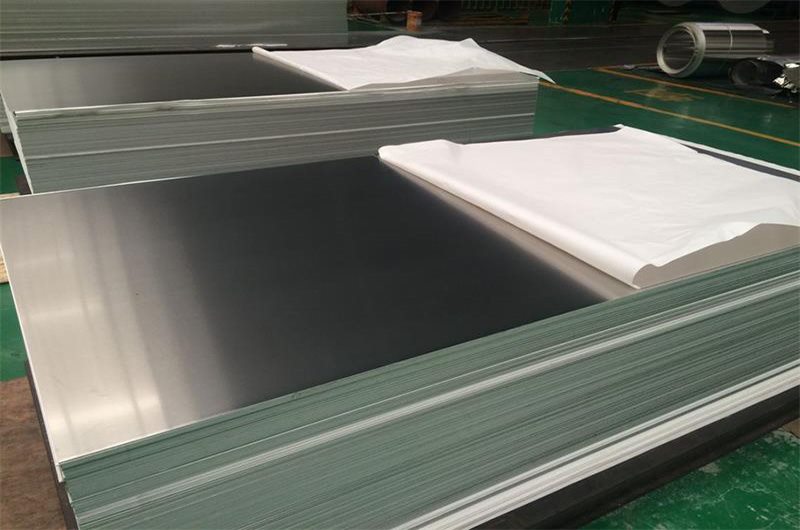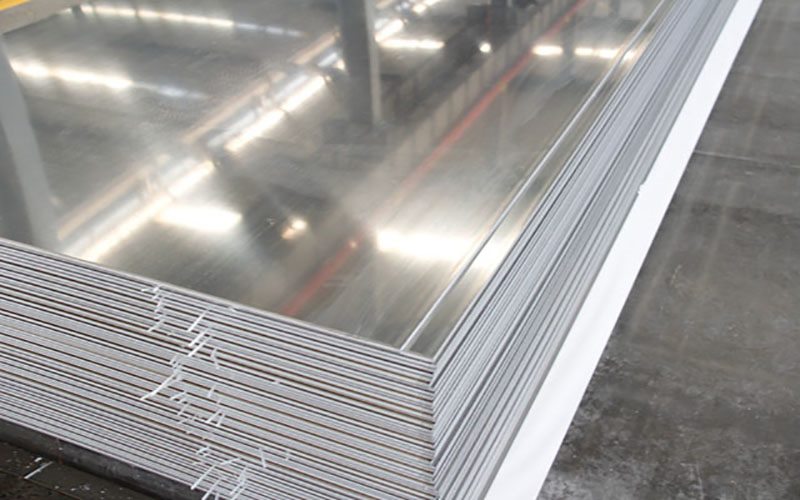- 6063 Aluminum Plate Specifications
- 6063 Aluminum Plate Mechanical Properties
- Aluminium 6063 sheet equivalent grades
- Physical Properties 6063
- Typical 6063 Aluminum Plate Introduction
- 6063 Aluminum Chemical Composition Limits
- Physical Properties of Aluminum Alloy 6063
- What is Aluminum 6063 Equivalent to?
- What is 6063 Aluminum Used for?
- What is the Difference between aluminum 6063 T5 and 6063 T6?
- What is the Difference between 6061 and 6063 Aluminum?
- Is 6061 or 6063 better for Anodizing?
6063 Aluminum Sheet is a versatile material with good strength, corrosion resistance and formability for a wide range of applications such as architectural applications such as window frames, door frames and curtain walls, as well as furniture, electronic enclosures and the transportation industry.

6063 aluminum alloy has a composition of aluminum, magnesium and silicon, where magnesium and silicon contribute to its strength and hardness. Tempers include O, T4, T5 and T6, each offering different strength and hardness properties.
6063 Aluminum Plate Specifications
| Properties | Value |
|---|---|
| Standard | ASTM B209, EN 573-3, EN 485-2, AMS QQ-A-250/11 |
| Thickness | 0.2mm - 500mm |
| Width | <2650mm |
| Length | Up to 288" |
| Temper | T6, T6511 |
| Surface finish | Mill, brushed, anodized |
Condition : T5 or T6 (most commonly used in construction and industrial applications)
Surface finishes can be polished, brushed, anodized or powder coated, depending on application requirements.
6063 Aluminum Plate Mechanical Properties
| Tensile Strength (psi) | Yield Strength (psi) | Elongation (% in 2″) | Brinell Hardness |
| 27, 000 | 21, 000 | 12 | 60 |
Please note that these values are for reference only and actual properties may vary depending on the specific manufacturing process, temperature, and thickness of the plate.
Aluminium 6063 sheet equivalent grades
| UNS | WNR | DIN | EN | ISO | BS (OLD) | USA |
| A96063 | 3.32206 | AlMgSi0.5 | AW AlMg0, 7Si EN AW 6063 | AlMg0, 7Si | HE9 | AA6063 |
Physical Properties 6063
| Temper | T52 | T6 |
| Density | 0.098 lb/in3 | 0.098 lb/in3 |
| Ultimate Tensile Strength | 27 ksi | 35 ksi |
| Yield Tensile Strength | 21 ksi | 31 ksi |
| Fatigue Strength | 9.7 ksi | 10 ksi |
| Shear Strength | 15 ksi | 22 ksi |
| Shear Modulus | 3, 700 ksi | 3, 770 ksi |
| Hardness Rockwell | Brinell | B17 | 60 | B27 | 65 |
| Elongation at Break Percentage | 12% | 22% |
| Modulus of Elasticity | 10, 000 ksi | 10, 000 ksi |
| Poisson’s Ratio | 0.33 | 0.33 |
| Machinability Percentage | N/A | 50% |
| Melting Point | 1, 140-1, 210 °F | 1, 140-1, 210 °F |
| Specific Heat | 2.15 x 10^-1 BTU/lb-°F | 2.15 x 10^-1 BTU/lb-°F |
| Thermal Conductivity | 1, 450 BTU-in/hr-ft^2-°F | 1, 390 BTU-in/hr-ft^2-°F |
| Electrical Conductivity | 53% IACS | 53% IACS |
Typical 6063 Aluminum Plate Introduction
The main difference between 6063-T4, 6063-T5 and 6063-T6 aluminum sheets is their mechanical properties and ability to withstand stress deformation.
6063-T4 Aluminum Plate
6063 t4 is commonly used in architectural applications where excellent corrosion resistance, moderate strength and good formability are required.
6063 T5 Aluminum Plate
6063 t5 is often used in structural and architectural applications that require higher strength and better resistance to stress deformation.
6063 T6 Aluminum Plate
This alloy is often used in high-stress applications that require excellent strength and toughness, such as aircraft parts, bicycle frames and automotive components.
6063 O Aluminum Plate
6063-O aluminum sheet is the softest and easiest to form for applications requiring complex shapes and deep drawing operations.
Compared with 6063-T4, T5, T6, 6063-O aluminum plate has lower strength and hardness, but has excellent formability,
For applications where strength is not a primary concern, 6063-O is a good choice due to its excellent formability and cost effectiveness.
If higher strength is required, 6063-T4, T5 or T6 will be more suitable.
The main difference between these three alloys is their mechanical properties and ability to withstand stress deformation.
- 6064-T4 has medium strength and good formability
- 6063-T5 has higher strength and better resistance to deformation
- 6063-T6 has excellent strength and toughness and is suitable for high stress applications, 6063-T6 is the hardest and most difficult to form due to its higher strength.
6063 Aluminum Chemical Composition Limits
| Aluminum (Al) | Balance |
|---|---|
| Silicon (Si) | 0.20% - 0.60% |
| Iron (Fe) | 0.35% max |
| Copper (Cu) | 0.10% max |
| Manganese (Mn) | 0.10% max |
| Magnesium (Mg) | 0.45% - 0.90% |
| Chromium (Cr) | 0.10% max |
| Zinc (Zn) | 0.10% max |
| Titanium (Ti) | 0.10% max |
| Other elements | 0.05% max (each), 0.15% max (total) |
Physical Properties of Aluminum Alloy 6063
| Properties | Value |
|---|---|
| Density | 2.7 g/cm³ (0.0975 lb/in³) |
| Melting point | 606°C (1123°F) |
| Thermal conductivity | 201-218 W/mK (1170-1270 BTU/hr-ft-°F) |
| Electrical conductivity | 34-40 MS/m (106-125% IACS) |
| Specific heat capacity | 900-970 J/kg-K (0.215-0.232 BTU/lb-°F) |
| Coefficient of thermal expansion | 23.8 x 10^-6/K (13.2 x 10^-6/°F) |
What is Aluminum 6063 Equivalent to?
6063 aluminum alloy has various designations depending on the standards used by different organizations. Some of the common designations for this alloy are :
- AA6063 : This is the aluminum association designation for the alloy and is the most widely used designation in North America.
- EN AW-6063 : This is the European standard designation for the alloy.
- ISO AlMg0.7Si : This is the international organization for standardization (ISO) designation for the alloy.
- UNS A96063 : This is the unified numbering system (UNS) designation for the alloy and is used mainly in the United States.
What is 6063 Aluminum Used for?
6063 Aluminum Sheet is a versatile alloy that can be used in a variety of applications. Some common applications of 6063 aluminum sheet include :
- Architectural applications : 6063 aluminum sheets are commonly used in architectural applications such as window frames, door frames, roof and siding, and curtain walls. Its high strength and corrosion resistance make it an excellent choice for these applications.
- Electrical Applications : 6063 aluminum sheet is often used in electrical applications due to its good electrical and thermal conductivity. It is used in bus bars, heat sinks and other electronic components.
- Automotive applications : 6063 aluminum sheets are used in the automotive industry for door handles, fuel tanks, trims and other parts. Its lightweight properties make it ideal for reducing overall vehicle weight, thereby improving fuel efficiency.
- Furniture and decorative applications : 6063 aluminum sheet is also used in the furniture and decorative industry for items such as frames, handles and moldings.
- Industrial Applications : Due to its high strength and corrosion resistance, 6063 aluminum sheet is used in various industrial applications such as conveying systems, machine parts, and piping systems.
6063 Aluminum Sheet is a highly versatile alloy with a wide range of applications due to its combination of strength, durability and corrosion resistance.
What is the Difference between aluminum 6063 T5 and 6063 T6?
6063-T5 and 6063-T6 are two variants of the same aluminum alloy, but differ in their tempering characteristics and mechanical properties.
- 6063-T5 is an artificially aged aluminum alloy quenched and tempered. The process involves heating the alloy to high temperatures, quenching it in water, and then allowing it to age naturally at room temperature. T5 tempering results in aluminum having higher elongation (ability to deform without breaking) and lower strength compared to T6.
- 6063-T6 is an aluminum alloy quenched and tempered by solution heat treatment and artificial aging. The process involves heating the alloy to a high temperature, quenching it in water, and then reheating it to a lower temperature for a period of time. The T6 temper results in higher tensile and yield strengths in aluminum compared to T5.

- 6063-T5 is a softer, more flexible aluminum alloy
- 6063-T6 are stronger and stiffer.
6065 - The choice between the two depends on the specific application and desired characteristics :
- 6063-T5 may be used in architectural applications where flexibility is important.
- 6063-T6 may be used in structural applications requiring high strength and stiffness.
What is the Difference between 6061 and 6063 Aluminum?
Both 6061 and 6063 are popular aluminum alloy grades used in a variety of applications. Here are some key differences between 6061 and 6063 aluminum :
Chemical Composition
- The main alloying elements of 6061 aluminum are magnesium and silicon
- The main alloying elements of 6063 aluminum are magnesium, silicon and a small amount of copper.
Mechanical Behavior
6061 aluminum is generally stronger and more durable than 6063 aluminum, with higher tensile and yield strengths. 6061 also has better corrosion resistance and machinability than 6063.
Heat Treatment
Both alloys can be heat treated, but 6061 aluminum is more responsive to heat treatment and can be hardened to a greater extent than 6063.
Exterior
6063 aluminum has a smoother surface finish than 6061, making it a popular choice for architectural applications where appearance is important.
Application
- 6061 aluminum is commonly used in structural applications such as aircraft components, automotive components, and marine hardware.
- 6063 aluminum is commonly used in architectural applications such as window frames, door frames and trim.
The main difference between 6061 and 6063 aluminum is their chemical composition, mechanical properties, heat treatment characteristics, appearance and application. The choice between these two alloys depends on the specific requirements of the application.
Is 6061 or 6063 better for Anodizing?
Both 6061 and 6063 aluminum alloys can be anodized, but 6063 is generally considered more suitable for anodizing.
- 6063 has a higher silicon content than 6061, which makes it more receptive to anodizing processes. Silicon creates a smoother, more uniform surface during the anodizing process, resulting in a more consistent, attractive finish.
- 6063 has a finer grain structure than 6061, which also contributes to better anodizing results. The fine grain structure allows the anodizing solution to penetrate the surface more evenly, resulting in a more uniform and consistent anodized finish.
Both 6061 and 6063 can be anodized successfully and the choice between the two will depend on other factors such as the specific application, desired properties and availability of the alloy.
